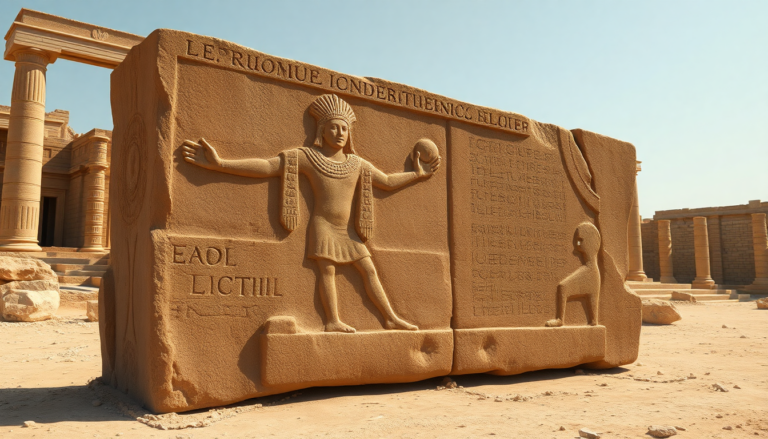Argomenti trattati
Imagine wandering through the ruins of an ancient civilization, where every stone tells a story. Recently, a team of archaeologists struck gold—or rather, stone—when they unearthed a monumental relief in the historic region of Nineveh, present-day Mosul, Iraq. This discovery not only adds a chapter to the history of the Assyrian Empire but also captivates the imagination of travelers and history enthusiasts alike. The implications are enormous, reshaping what we think we know about this pivotal period in human history.
Unearthing the past in a rich archaeological landscape
The area surrounding Nineveh is renowned for its archaeological potential, a fact that many may overlook. With its tumultuous history and political instability, many parts of this region remain unexplored. Nineveh, once the crown jewel of the Assyrian Empire, is a treasure trove waiting for intrepid explorers. I remember when I first ventured into similar territories—my heart raced with the thrill of possibility, and it seems these archaeologists experienced the same exhilaration as they dug into the past.
During recent excavations near the throne room of King Ashurbanipal’s Northern Palace, researchers from Heidelberg University made a striking discovery: a massive relief carved on a stone slab measuring 5.5 meters long and 3 meters tall, weighing around 12 tons. The sheer size of this artifact is impressive, but the real intrigue lies in the imagery it portrays. This monumental relief, depicting the Assyrian king alongside two principal deities, marks a significant find, especially since such representations are rare in Assyrian palace art.
A closer look at the monumental relief
As the lead archaeologist, Professor Dr. Aaron Schmitt, noted, this relief is unique. Unlike the numerous Assyrian palace reliefs known to scholars, which often lack depictions of major deities, this one features King Ashurbanipal flanked by the gods Ashur and Ishtar—the latter being the patron goddess of Nineveh. The presence of these divine figures alongside the king not only underscores the political and religious dynamics of the time but also invites us to ponder the relationships between power and faith in ancient societies.
But that’s not all! Accompanying the deities is a fish-genius, a mythical creature believed to confer life and safety upon the king and the gods. A figure, possibly representing a scorpion-man, adds to the mystique of the scene. These symbols speak volumes about the cultural and spiritual beliefs of the Assyrians, giving us a glimpse into a world that seems so distant yet is intricately connected to our own.
The significance of the discovery
As the dust settles and the fragments of the relief are carefully studied, the implications of this find stretch far beyond the excavation site. The monumental relief was originally placed in a niche facing the throne room’s main entrance—the very heart of the royal palace. Professor Schmitt theorizes that the relief was buried during the Hellenistic period, possibly in the 3rd or 2nd century BC, which could explain why it eluded earlier archaeologists during their explorations of the site over a century ago.
It’s fascinating to think about how, in 1847, explorer Austen Henry Layard first uncovered the remnants of two palaces in Nineveh, sparking a wave of interest in Assyrian art and culture. Layard’s discoveries, now housed in the British Museum, ignited a passion that continues to this day. As many know, historical discoveries not only enrich our understanding of the past but also influence our present and future.
Looking ahead: what’s next for the relief?
The State Board of Antiquities and Heritage of Iraq (SBAH) has announced plans to restore the relief to its original location and open it to the public. This is a thrilling prospect for travelers and history buffs alike, who yearn to witness firsthand the echoes of ancient civilization. Imagine standing before this grand depiction of power and divinity, feeling the weight of history pressing down, and realizing that you’re witnessing a moment that has survived the tides of time.
As we await further research and findings from this excavation, it’s clear that this monumental relief is not just a relic of the past; it’s a bridge connecting us to the rich tapestry of human history. The excitement of discovery is palpable, and the stories yet to be told are simply waiting to unfold. So, pack your bags and maybe, just maybe, you’ll find yourself walking the same grounds where kings once stood, surrounded by the whispers of ancient gods.

